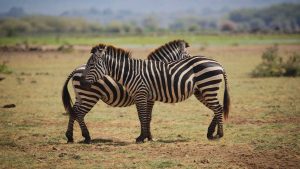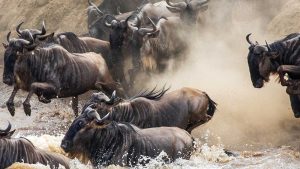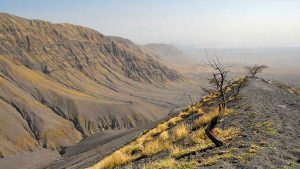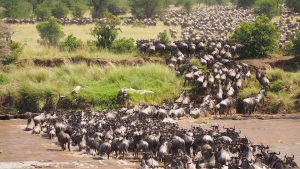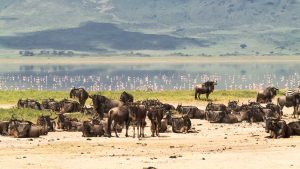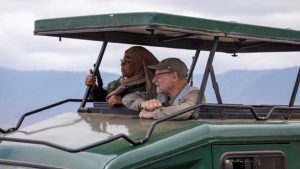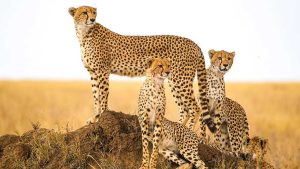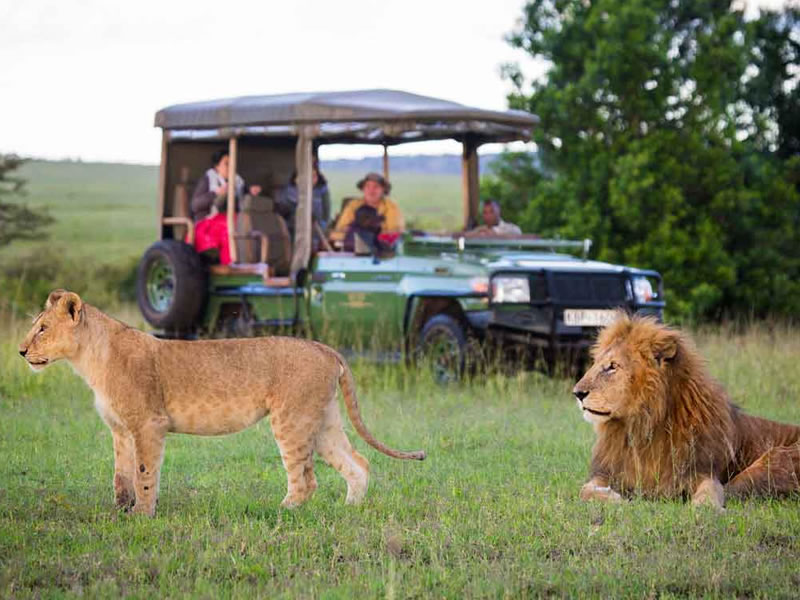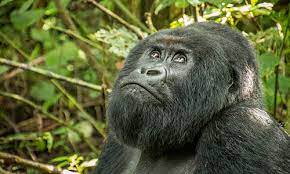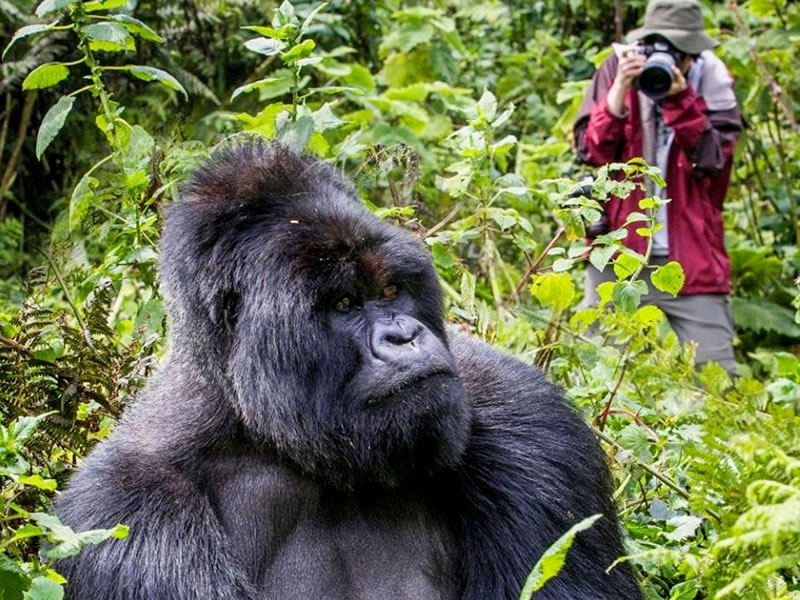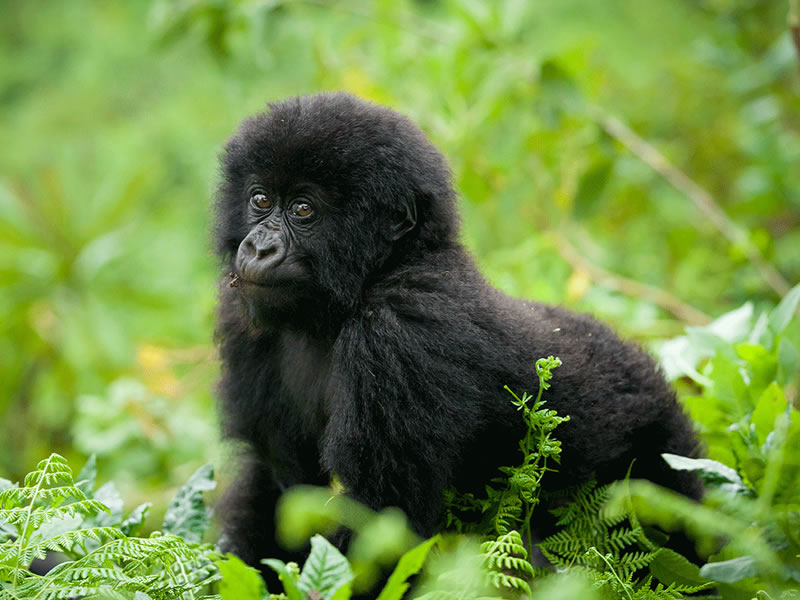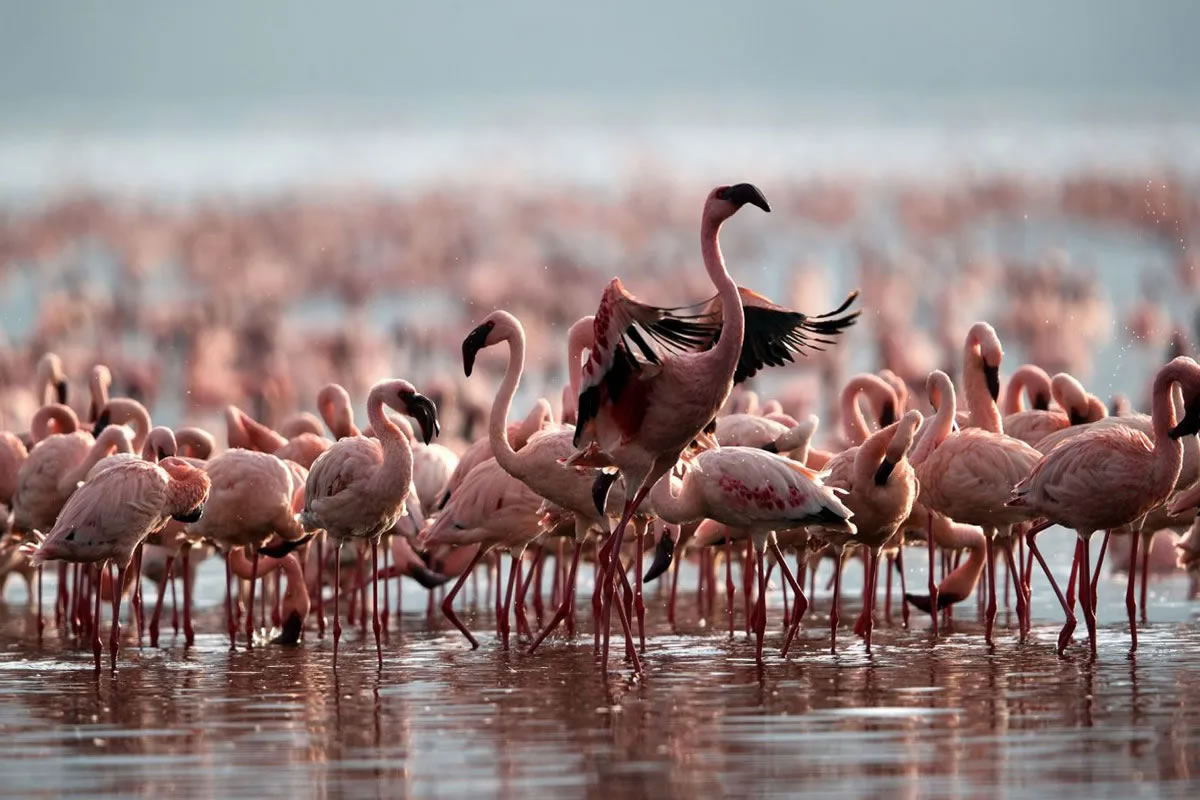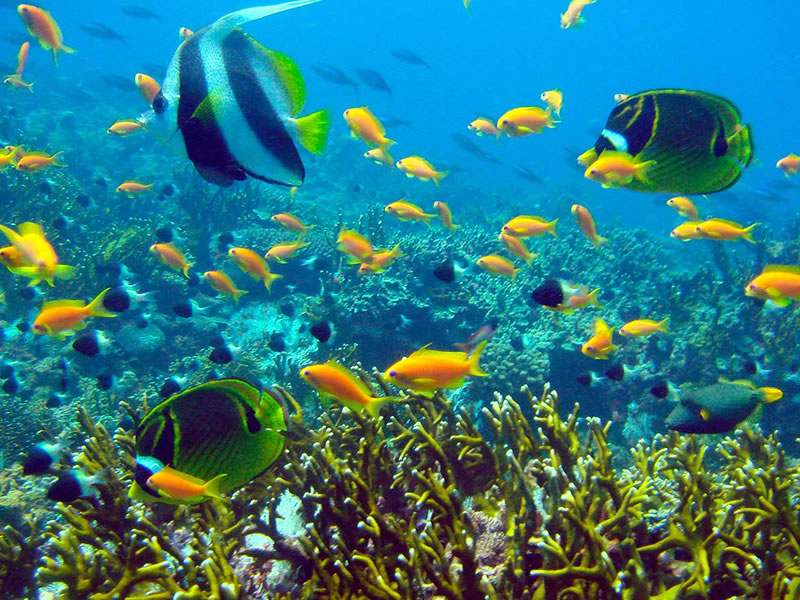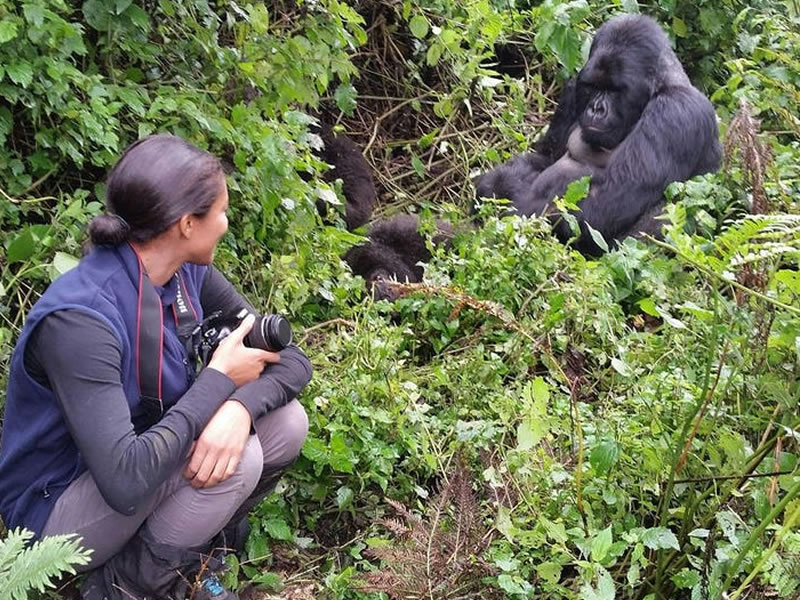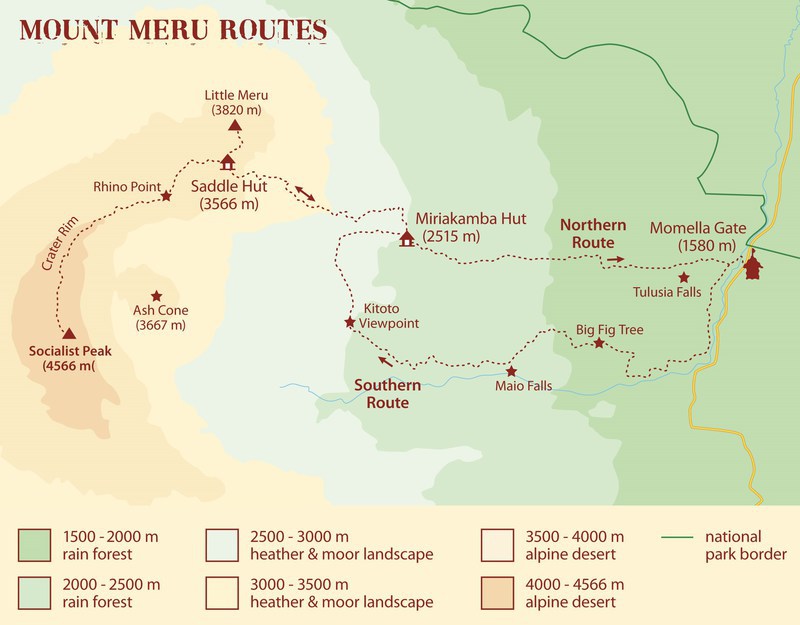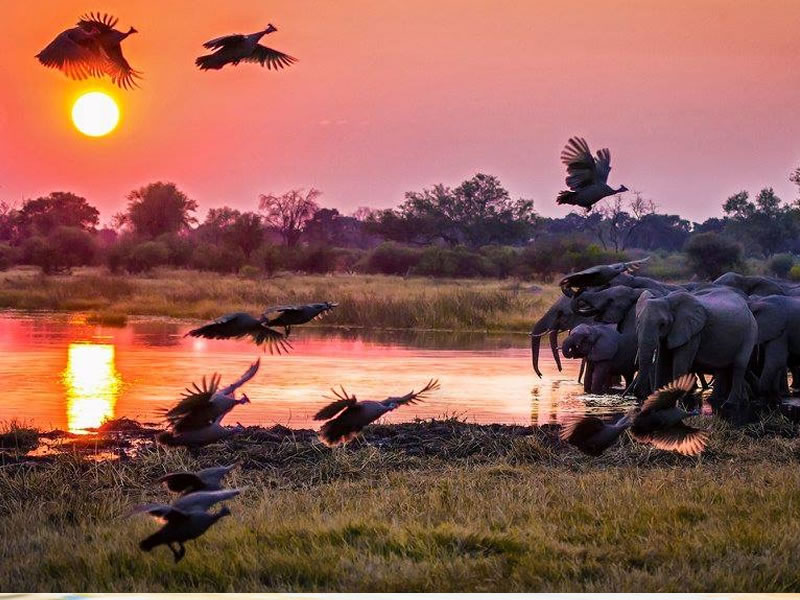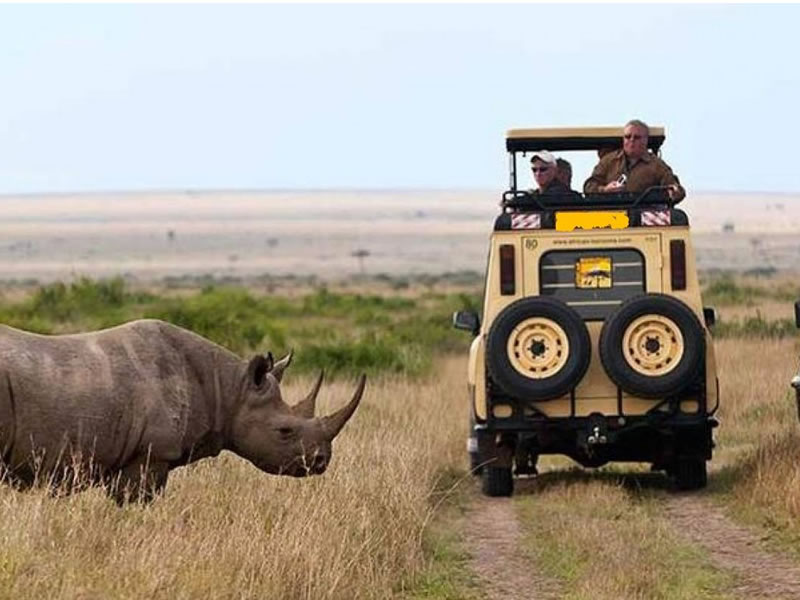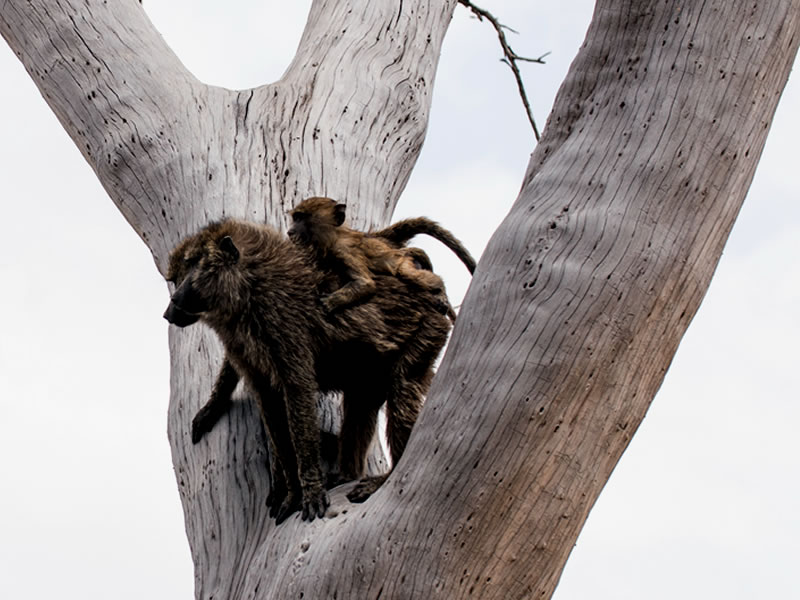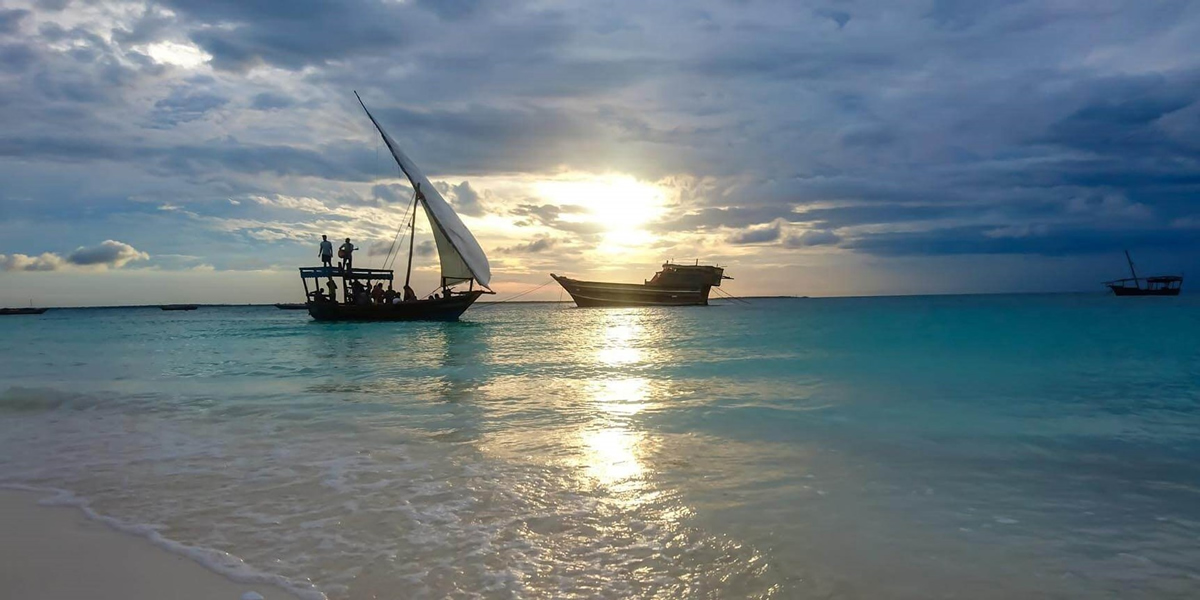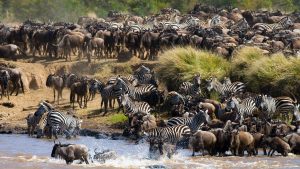
More About NgoroNgoro Crater
The Nature Zoo Famous Ngorongoro Crater, 2,286 meters above sea level, is the largest unbroken caldera in the world. Surrounded by very steep walls rising 610 meters from the crater floor, this natural amphitheater covers 260 square km. That’s 100 square miles and is home to over 25,000 large mammals. About half of the animals are zebras and wildebeests.
There are also gazelles, buffaloes, elands, hartebeests, warthogs, and the rare rhinoceros. Occasionally Maasai can also be seen bringing their cattle down the crater walls to the lake below. Such vast numbers of animals attract many predators, including lions, hyenas, cheetahs, and leopards. More than 100 species of birds not found in the Serengeti can also be spotted here. Countless flamingoes from a pink blanket over the soda lakes.
The Crater has been declared a World Heritage site. The Ngorongoro crater lies within Ngorongoro Conservation Area, which covers more than 8,000 square km. It is bounded Lake Eyasi in the southwest and the Gol Mountains in the north. Roughly in the center is the Olbalal Swamp and the arid.
Olduvai Gorge: It is dotted with extinct craters and high plains and to the north is Oldonyo le Ngai, a grey, forbidding perfect cone that is a still-active volcano.
History and geography
Based on fossil evidence found at the Olduvai Gorge, it is known that various hominid species have occupied the area for 3 million years. Hunter gatherers were replaced by pastorialists a few thousand years ago. The Mbulu came to the area about 2,000 years ago, and were joined by the Datoga around the year 1700. Both groups were driven from the area by the Maasai in the 1800s. Massive fig trees in the northwest of the Lerai Forest are sacred to the Maasai and Datoga people. Some of them may have been planted on the grave of a Datago leader who died in battle with the Maasai around 1840.
No Europeans are known to have set foot in the Crater until 1892, when it was visited by Dr. Oscar Baumann. Two German brothers farmed in the Crater until the outbreak of World War I, after leasing the land from the German colonial administration then in control of East Africa. Dr. Baumann shot three rhinos while camped in the crater, and the German brothers regularly organized shooting parties to entertain their German friends. They also attempted to drive the wildebeest herds out of the crater.
The Ngorongoro area originally was part of the Serengeti National Park when it was created by the British in 1951. Maasai continued to live in the newly created park until 1959, when repeated conflicts with park authorities over land use led the British to evict them to the newly declared Ngorongoro Conservation Area.
Land in the conservation area is multi-use, it is unique in Tanzania as the only conservation area providing protection status for wildlife whilst allowing human habitation. As such land use is controlled to prevent negative effects on the wildlife population, for example cultivation is prohibited at all but subsistence levels.
The area is part of the Serengeti ecosystem, and to the north-west, it adjoins the Serengeti National Park and is contiguous with the southern Serengeti plains, these plains also extend to the north into unprotected Loliondo division and are kept open to wildlife through trans-human pastoralism practiced by Maasai. The south and west of the area are volcanic highlands, including the famous Ngorongoro Crater and the lesser known Empakai. The southern and eastern boundaries are approximately defined by the rim of the Great Rift Valley wall, which also prevents animal migration in these directions.
The Maasai people had been grazing their livestock in the open plains which they knew as “endless plain” for over 200 years when the first European explorers visited the area. The name Serengeti is an approximation of the word used by the Maasai to describe the area. German geographer and explorer Dr. Oscar Baumann entered the area in 1892. Baumann killed three rhinos during a stay in the Ngorongoro crater.
The Serengeti is Tanzania’s oldest national park and remains the flagship of the country’s tourism industry, providing a major draw to the “Northern Safari Circuit”, encompassing Lake Manyara, Tarangire and Arusha national parks, as well as Ngorongoro Conservation Area.
Wildlife
A population of approximately 25,000 large animals, largely ungulates along with reputedly the highest density of mammalian predators in Africa, lives in the crater. These include the black rhinoceros, whose local population declined from about 108 in 1964-66 to between 11-14 in 1995, and the hippopotamus, which is very uncommon in the area. There also are many other ungulates: the wildebeest (7,000 estimated in 1994), the zebra (4,000), the eland, and Grant’s and Thomson’s gazelles (3,000).

